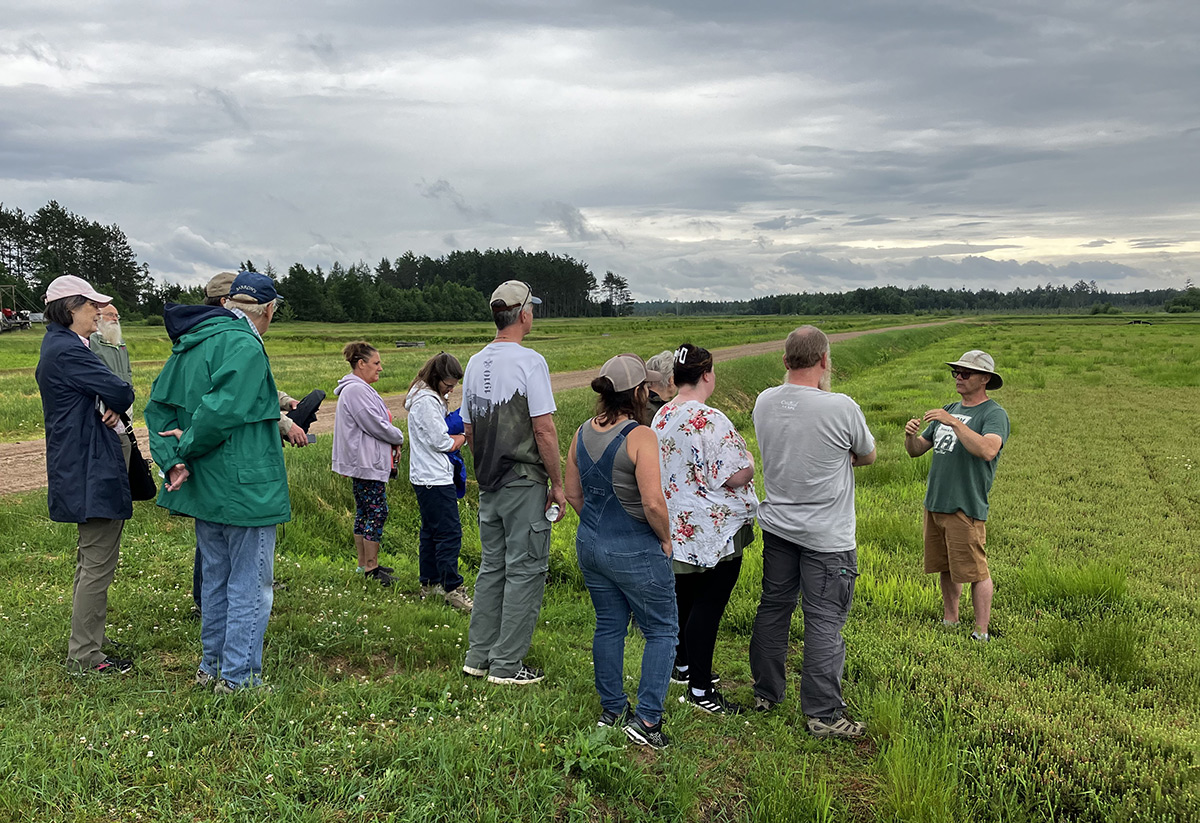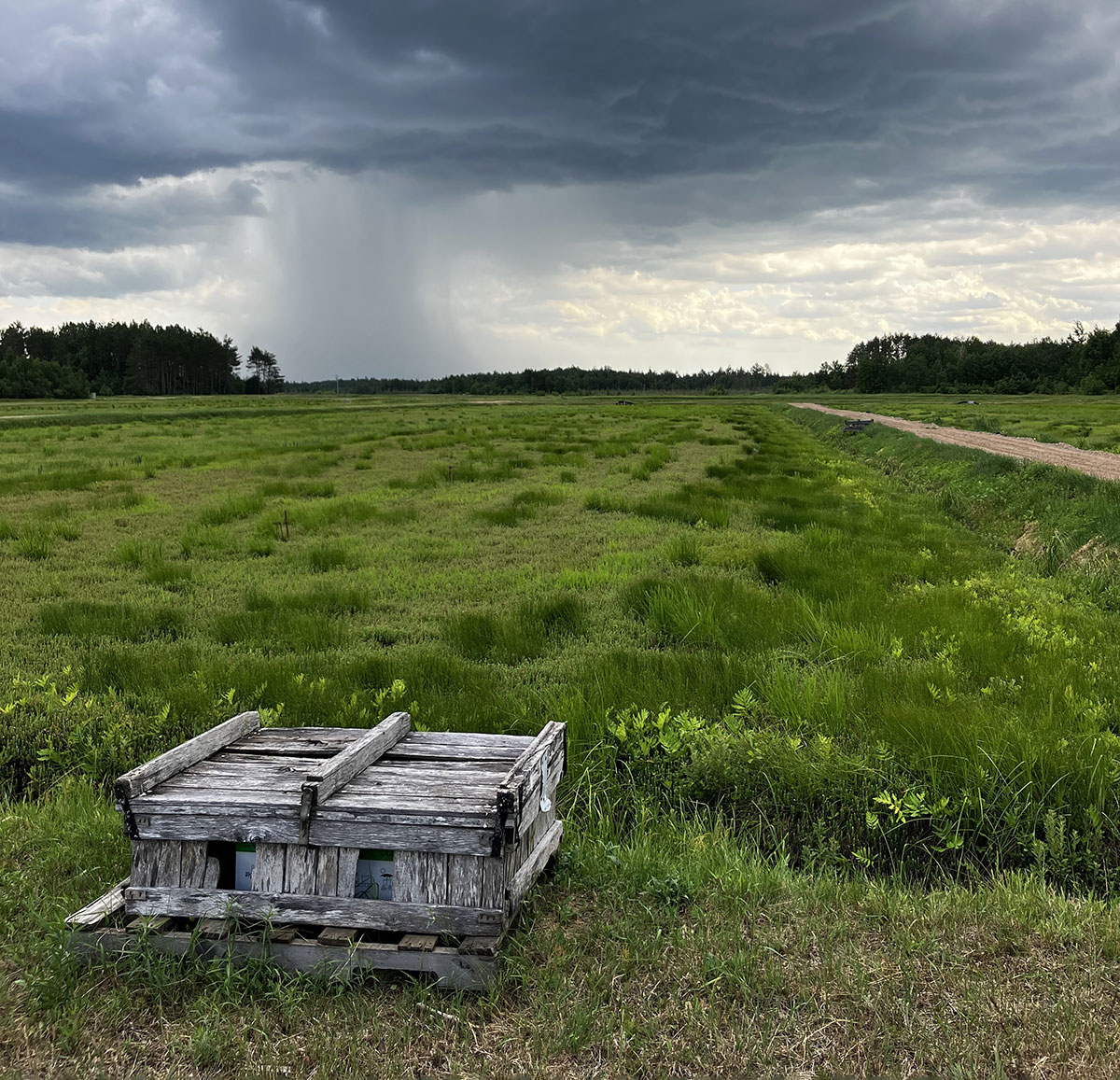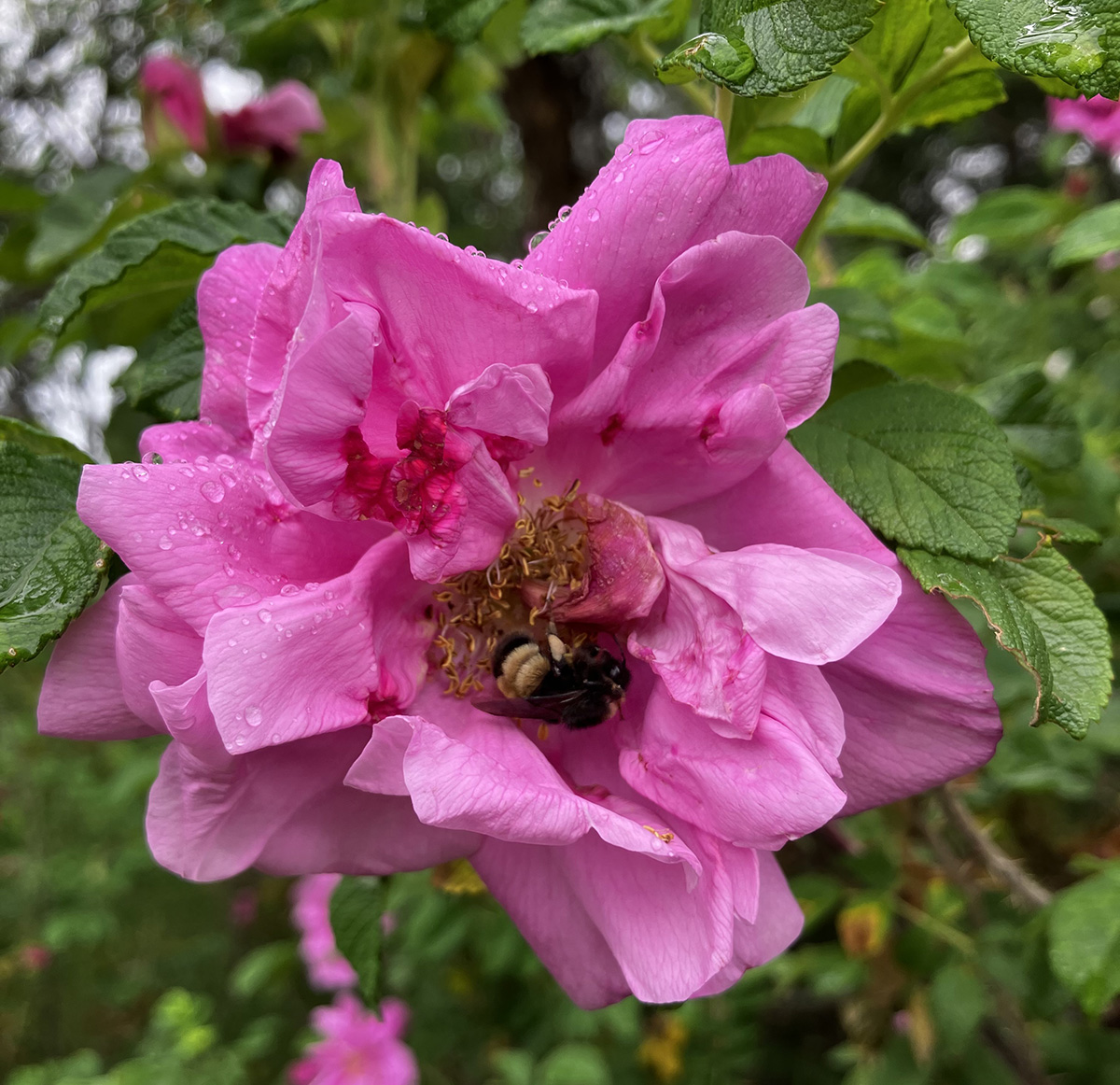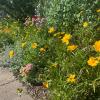Although best known as the “Dairy State,” Wisconsin also has the distinction of being the leading producer of cranberries in the nation. Like most fruits and berries, cranberries are insect pollinated and are a perfect match for Xerces’ on-farm conservation work.
Mention insect pollinators and many cranberry farmers will immediately speak of the hives of honey bees and commercial (purchased) bumble bees that service their bogs. However, our wild native bees also play a significant role in cranberry pollination, and cranberry farms have many opportunities to adjust their practices to support native bee health.
Organic practices control pests, deepen connection to the land
I recently had the privilege of working with an extraordinary cranberry family farm here in northern Wisconsin, James Lake Farms. Farmer John Stauner and family are putting native bees at the forefront of their farm’s cranberry production. The Stauner family are one of the few cranberry farmers here in Wisconsin who use organic practices, specifically because they value the ecological and entomological significance of their farm in the broader web of life.

Organic and pollinator-friendly practices that the Stauners employ include (and are not limited to):
- Night-spraying organic-approved fungicides and pesticides to minimize their impact on day-flying pollinators (primarily bee species);
- Surveying for pests or bacterial/fungal disease multiple times per week, in order to correctly determine a threshold for action;
- Spring flooding for pest larvae control; and
- Setting up piles of woody or rock debris to encourage on-farm bumble bee nesting sites.
While organic cranberry farming presents additional and different challenges in comparison to conventional practices, the Stauner family finds the unique and dynamic complexity of organic farming to be intellectually energizing, requiring a greater connection to and literacy of their land.
John is especially knowledgeable about the landscape of their farm. When asked about the farm’s history, John will detail its glacial beginnings, past and present habitat coverage, and the reciprocal significance the soils and habitats have for cranberry production and quality of life (for both humans and wildlife).

Existing habitat and plantings support pollinators on farm margins
In addition to using organic farm management practices that help protect and promote pollinators, the Stauner family is also conscientious of the habitat value of the hundreds of acres of tamarack-spruce muskeg (a type of swamp) and upland hardwoods that surround their cranberry bogs. This matrix of plant communities supports a wealth of pollinator-friendly native shrubs and flowers including alder (Alnus incana), willow (Salix spp.), leatherleaf (Chamaedaphne calyculata), labrador tea (Rhododendron groenlandicum), steeplebush (Spiraea tomentosa), joe pye weed (Eutrochium maculatum), whorled loosestrife (Lysimachia quadrifolia), false mayflower (Maianthemum trifolium), wintergreen (Gaultheria procumbens), large-leaved aster (Eurybia macrophylla), native honeysuckle (Diervilla lonicera), and even a native cranberry (Vaccinium oxycoccos)!

Along with helping to inventory existing bee-friendly habitat around the farm, John had invited me to identify farmland areas where new pollinator habitat could add an additional bee-boost. While the attractive, en masse bloom of cranberry flowers do provide abundant pollen and nectar in late June and July, our native bees require floral blooms all season long to ensure a healthy winter of hibernation for the next generation of spring- and summer-emerging bees.
With season-long bloom on our mind, we decided an old dairy cow pasture would be a great site for a new pollinator prairie planting, replacing the non-native grasses that dominated its dry, sandy soils. With the guidance from Xerces’ “Organic Site Preparation for Wildflower Establishment” publication, John opted for an organic transition of 4 acres from pasture to prairie. He is currently cover-cropping the acreage in advance of a prairie planting planned for fall 2023.

With John’s approval and in partnership with the local Natural Resources Conservation Service (NRCS) office, I created a custom seed mix of native grasses and flowers (37 total species) that are adapted to the dry soils of the planting site. Nearly the entirety of the seed mix will be funded thanks to a NRCS farm conservation incentive program, with the Stauner family providing the hard work of site preparation, installation, and planting management. In all, our hope is that these additional acres of high-quality pollinator habitat will act as a lasting, on-farm refugium and food source for Wisconsin’s native bees: the best and most reliable pollinators for the Stauner family’s cranberry crop.





